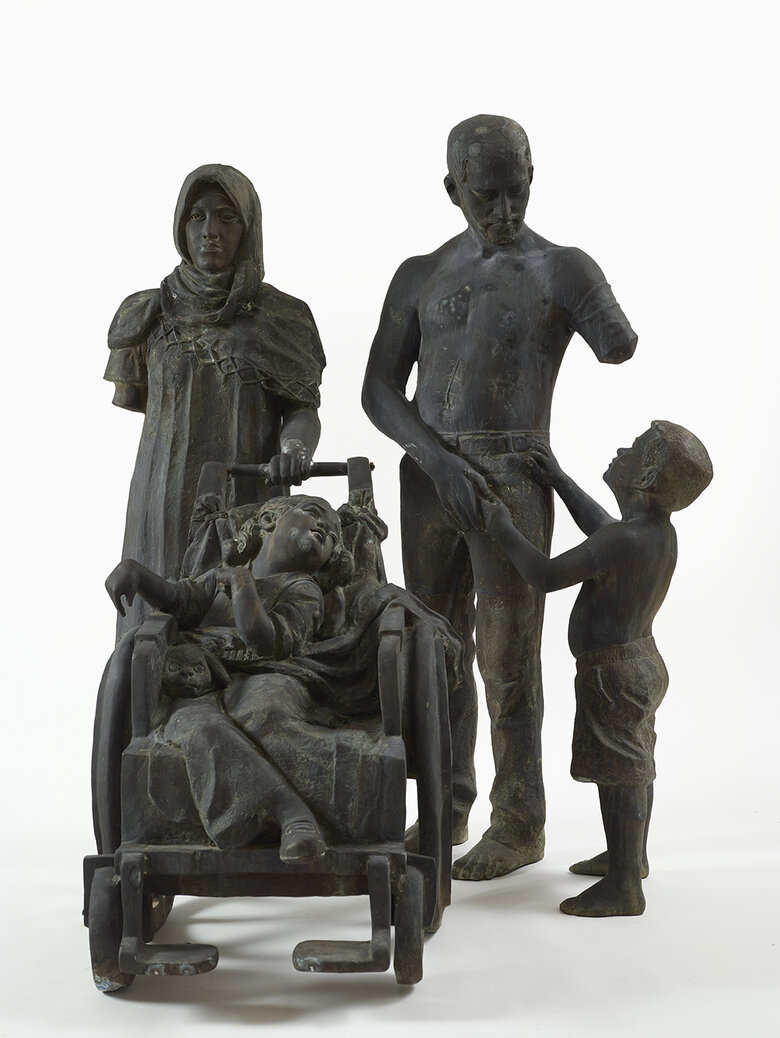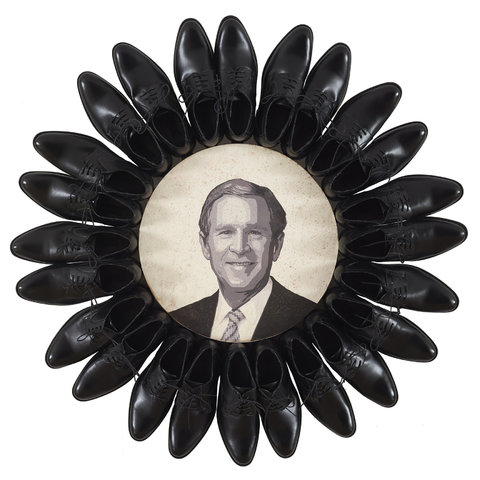Mahmoud Obaidi’s Remains of a Ravaged City, 2015, is a monumental work that reflects on the destruction of Iraq in the years following the 2003 U.S.-led invasion. The painting spans more than seven meters across, overwhelming the viewer with its scale and intensity. Obaidi covers the canvas with thick black brushstrokes applied in an aggressive, almost violent manner. These dark marks dominate the surface, obscuring and distorting what lies beneath. Within the density of the strokes, some fragmented human shapes emerge as well as representations of what might have been buildings and shrapnel. Everything is partly hidden and partly visible, intentionally preventing the eye from conclusively making sense of the chaos in the ruins of a broken city.
The choice of medium heightens the painting’s impact. Ink, with its immediacy and fluidity, allows Obaidi to create raw, forceful, and speedy gestural depictions that mirror the urgency and violence of destruction. Obaidi’s addition of other mixed media into the painting introduces texture and weight to its surface making it seem dense and heavy.
The intertwined, flattened figures painted onto the wide canvas lack clarity. The painting's composition lacks depth; there is no apparent background or foreground. There is no visible cityscape, nor a structured order to guide the eye, which leaves the viewer in a sense of confusion and unease.
This deliberate disorientation in Remains of a Ravaged City mirrors the collapse of Iraq’s social and urban fabric. The effect is menacing and unsettling, evoking the anarchic atmosphere of war and its aftermath. The scale amplifies this effect and is essential to the experience of the painting. At nearly eight meters wide, and two and a half meters high - a human height scale - it invites the viewer to step into it. Standing before it, one feels drawn into its dark world, accentuated with thick and broad brushstrokes that fill the viewer's field of vision, creating an enveloping presence. This encounter mirrors the enormity of the trauma represented, forcing the audience into proximity with devastation.
Obaidi has described this work as a statement on cultural erasure. Reflecting on the impact of the invasion, he said: “It is amazing how a history, 7,000 years, is just gone. It is zero, not just zero, worse than zero.” His words stress the immense cultural and historical loss that informs the work. The painting functions as both a lament and an accusation: it laments the obliteration of an ancient civilization, while also pointing to the U.S.-led invasion as its cause.
Remains of a Ravaged City
relates to Obaidi’s earlier Make War Not Love series, 2013–2015, but its scale and tone mark an intensification. Where the earlier works examined the contradictions of war, this painting presents devastation with no relief. Its darkness is heavier, its menace sharper, and its vision more uncompromising. Through this work, Obaidi transforms the canvas into a site of mourning, memory, and testimony. He does not attempt to reconstruct what has been lost but insists on showing its absence. The painting stands as a visual record of a civilization erased, a reminder that war destroys not only lives but also cities, cultures, and entire histories.
signed in English on middle triptych: front bottom left with date 2015-2016
Triptych







